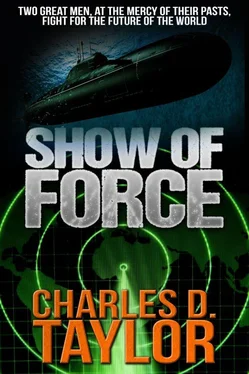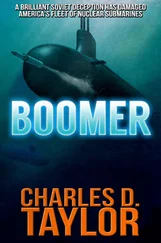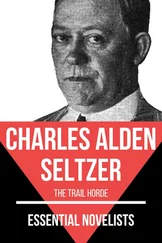For some unknown reason, the air strikes- that had been launched as the submarine attacks commenced did not come in contact with each other. The American planes had gone to the south, planning a sweep north at the last minute. The Russians had planned exactly the opposite. But this time they came in at surface level, hoping their Rigas wouldn't be picked up on radar until they were on top of Task Force 58.
David Charles was seated at his general quarters station, watching the status boards, waiting for the attack they knew was imminent. Texas was the first ship to give the warning.
"Local control," David ordered, releasing computer control to the Aegis-equipped ships at each point. The cruisers Texas, South Carolina, California, and Arkansas each had three guided-missile destroyers under their control. "Designate Sectors Red and Green to South Carolina and Arkansas. I want California to serve as backup." He called to one of Bill Dailey's assistants, "You.'re sure there are no other aircraft outside those sectors?"
"Correct, sir. They're coming in low, trying to avoid radar contact. We got them at about sixty miles."
"Thank you. Have Texas tie into California with her ships for anything coming through toward Nimitz." He casually referred to the giant carrier as if he were on another ship. His flag controlled all ships, yet had to function as if it rode none. The captain of Nimitz was ultimately responsible for his carrier, not the Admiral, who was merely hitching a ride.
The Rigas kept their low altitude, confusing fire-control radars as long as they could. Antimissile solutions were difficult with the radar screens cluttered with surface return, unable to pinpoint the attackers. "They're not going after the perimeter ships," said Bill Dailey.
"They're going to try to get through to the cripples and the carrier," answered David Charles. "Bill, have the inner screen put their guns on local control. They don't need solutions to fee."
"Yes, sir. You don't think there's any danger of hitting some of our own ships with gunfire?"
"No more than with missile fire. The Rigas have to slow down to pick out the cripples and climb a bit to fire their own missiles. Our guns aren't going to be any more dangerous than the Rigas are to our own ships."
Truxton was the first to be hit. They picked her out easily, her bridge gone, no guns to fire in her own defense, fires still burning forward. There was little opportunity for her to bring her stern launchers to bear. Two missile hits left her burning fiercely and dead in the water. It was even worse for O'Bannon, her men working desperately to regain electrical power. Her remaining turbines gave her enough forward motion, and she was being steered by hand, but there was no power available to her mount or launchers. She, too, was helpless against the aircraft that got through. O'Bannon disappeared in less than five minutes, leaving no trace of an eight-thousand-ton destroyer, and few survivors.
While the open formations allowed the ships enough room, in case one received a nuclear attack, they also invited single-ship attack by the aircraft. The Rigas were excellent planes, highly maneuverable and reasonably able to avoid missiles in a crowd. But coming in low they were able to pick out only one target, fire, and get away as quickly as possible. They had learned in only one day not to cluster together, inviting the Americans to a turkey shoot. This caution limited their firepower. Longer range and speed forced the designers of this VTOL jet to limit the weapon load. So they were able to make only their one run and then head for the barn.
The only other ship to be hit was the frigate Robert E. Peary. The smaller ship exploded moments after taking a missile near the after magazine. The explosion and fires left few survivors, and only those in the forward section escaped serious burns. Four Rigas were brought down, but only one of them got near the sector guarded by Texas as a backup. The new strategy saved Rigas for a later attack, but caused little damage. Nimitz was still unscathed.
The American planes also found a better organized defense when they came upon the Russian force. Sensing that the attack would come from the south, Alex Kupinsky had weighted his air defense ships in that direction, reserving enough defense for his carrier as David Charles had done. The Americans coordinated a two-pronged attack, similar to their first one, holding back some of their power to confuse the defenders.
The cruiser Grozny was still burning furiously in the rear of the formation when the two Intruders dropped out of the sky to finish the job the submarines had started. The attack on the cripple brought a hail of missiles as the two planes then turned toward Lenin. Neither was able to release the remainder of their pay load before they were brought down.
Svedrov coolly assigned sectors as his American counterparts had done, and then ensured that each AA ship received local control only after it was given a target. The American pilots found they were under attack on an individual basis, and they had no choice but to evade missiles rather than finish their initial attacks. Only one Intruder was successful in completing its first run, placing one of its missiles in the hull of a Kashin-class destroyer, Slavny, and leaving it sinking. The second flight fared better, deciding to come in low to take advantage of slow Soviet rearming and the confusion caused by confirmed tracking of some of the escaping first flight. When their cockpit alarms remained silent, indicating to the pilots that no fire-control radar had yet locked onto them, they became bolder, closing the ships for ease of attack.
The cruiser Admiral Nakhimov, on one of the points, had been designated by Kupinsky to fire chaff rockets with minimum charges. This created a variety of targets, making it difficult for missiles to lock on the ships. The outer perimeter of Kupinsky's ships then fired both guns and missiles at this second flight, under the coordination of Svedrov's individual assignment plan. He gave the targets one by one to his ships, and they, in turn, were able to fire missiles that locked immediately on their targets. Again, the attacking planes were forced to evade, only one getting through to hit another destroyer. This time four of the Corsairs were brought down.
To Kupinsky's delight, his ships had survived what could have been a devastating air attack, after the heavy damage inflicted by the submarines. "You were correct in your assumptions, Captain Svedrov. We have only one sunk and one badly damaged ship as a result of the American airplanes." And, as an afterthought, he said, "I doubt Grozny would have made it anyway."
"Thank you, sir." Svedrov changed the subject quickly. "But we have already lost a great deal today. Do you plan to maintain this course to intercept the Americans?"
"We have little choice. Our orders are to keep them from completing the installations on that island, and David Charles has placed his Task Force 58 between us and Islas Piedras."
The younger man leaned forward, his elbows on the table in front of him, massaging his closed eyes with a thumb and forefinger. "We will be there in a few hours." He stood up, looking very tired. "Let me go to the bridge and check with the navigator. We will want to reposition some of the ships forward."
"Just a minute, Svedrov." Alex gestured him toward the chair he had just left. "Sit down, please. You are still bothered by something, I am sure." The room was almost cleared out, leaving them to talk privately. Svedrov sat. "This is the time I need you most. I trust your judgment a great deal, and I cannot do all this myself. Tell me what is troubling you."
Читать дальше












